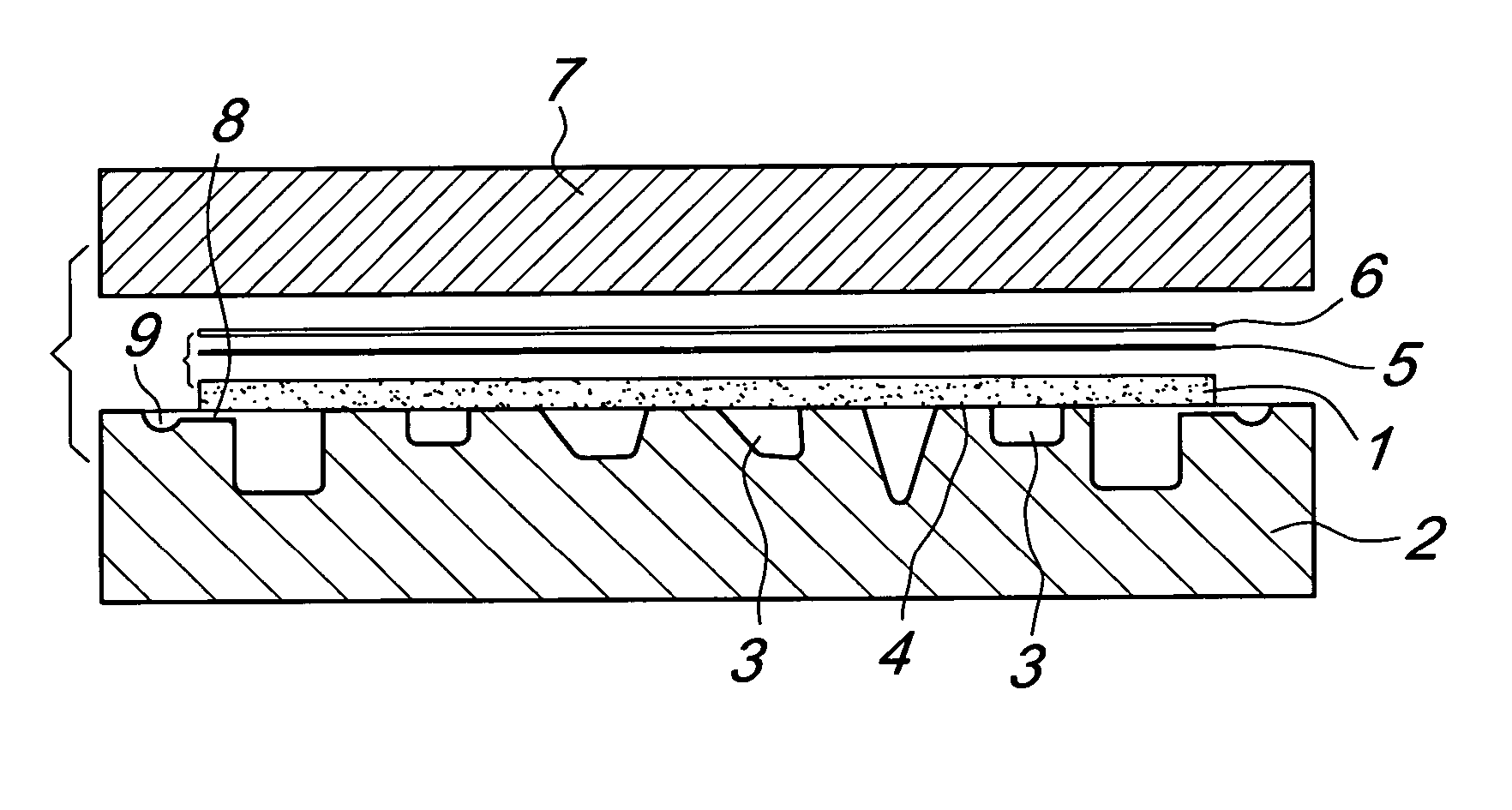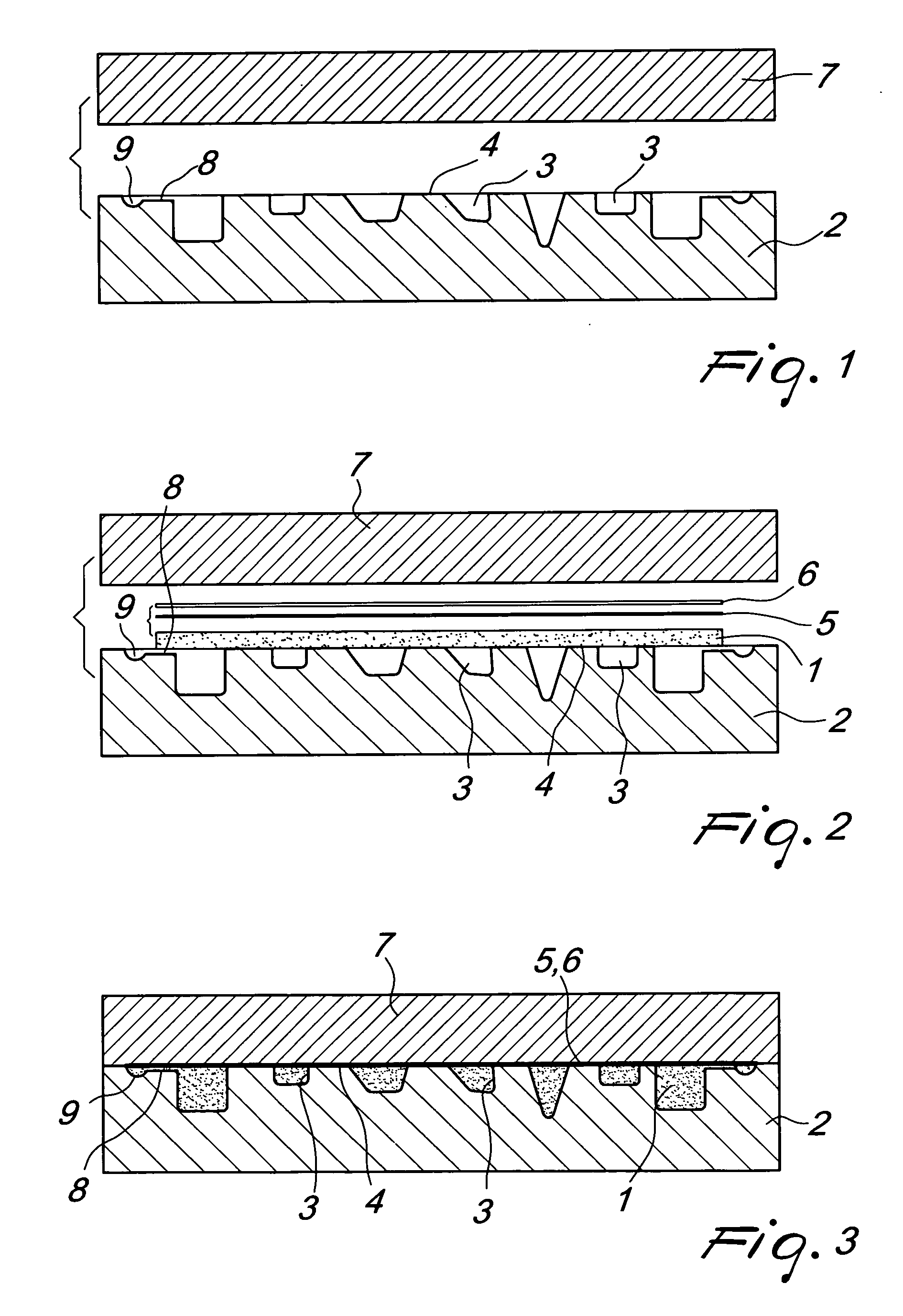Method for manufacturing perforated and/or two-color components, particularly for shoes in general
a technology of which is applied in the field of manufacturing perforated and/or two-color components, particularly for shoes, can solve the problems of substantial problems in achieving uniform distribution of materials, and the current inability to achieve high densities of elastomeric domains per unit surface, and achieves the assurance of reliability and safety in use. , the effect of easy movement of rubber
- Summary
- Abstract
- Description
- Claims
- Application Information
AI Technical Summary
Benefits of technology
Problems solved by technology
Method used
Image
Examples
Embodiment Construction
[0023] With reference to the figures, and particularly to FIGS. 1 to 4, the method for manufacturing perforated components, particularly for shoes in general, according to the invention, consists in positioning first of all a sheet-like element made of rubber or the like, designated by the reference numeral 1, on a mold 2, which forms a plurality of cavities 3, which are separated by edges 4, the free end whereof lies on the mold closure plane.
[0024] The expression “rubber and the like” is used to designate calendered products made of rubber, substantially constituted by mixtures of rubber that can be vulcanized both by sulfur cross-linking and accelerator agents with resin cross-linking or with peroxide cross-linking; the elastomers that are used most frequently can be constituted by isoprene rubber, butadiene rubber, butylene rubber, styrene butadiene rubber, nitrile rubber, natural rubber, ethylene and propylene with unsaturated monomer, silicone rubbers, chlorinated rubbers, et...
PUM
| Property | Measurement | Unit |
|---|---|---|
| Temperature | aaaaa | aaaaa |
| Temperature | aaaaa | aaaaa |
| Temperature | aaaaa | aaaaa |
Abstract
Description
Claims
Application Information
 Login to View More
Login to View More - R&D
- Intellectual Property
- Life Sciences
- Materials
- Tech Scout
- Unparalleled Data Quality
- Higher Quality Content
- 60% Fewer Hallucinations
Browse by: Latest US Patents, China's latest patents, Technical Efficacy Thesaurus, Application Domain, Technology Topic, Popular Technical Reports.
© 2025 PatSnap. All rights reserved.Legal|Privacy policy|Modern Slavery Act Transparency Statement|Sitemap|About US| Contact US: help@patsnap.com



